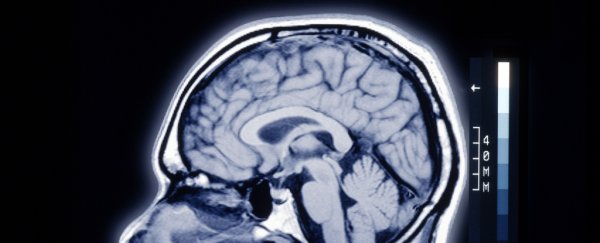When it comes to the world of mammals, humans tend to stand out a fair bit.
While many animals share some aspects of our intelligence, they don't take it to the same level we have. But pinning down why we're more cognitively advanced on a neurological level has been tricky; to date, studies have found no significant differences between the brains of mammals. Now, we finally have a lead.
A team of researchers from the Massachusetts Institute of Technology (MIT) has found that, compared to other mammals, human brains have a much lower number of the neuronal channels that allow the flow of ions such as calcium, potassium, and sodium.
This flow produces the electrical impulses that allow neurons to communicate with each other; having fewer of them could mean that the human brain can operate more efficiently, diverting resources to more complex cognitive functions.
"Previous comparative studies established that the human brain is built like other mammalian brains, so we were surprised to find strong evidence that human neurons are special," says neuroscientist Lou Beaulieu-Laroche of MIT.
The seeds of the finding were planted in 2018, when Beaulieu-Laroche and his colleague Mark Harnet of MIT conducted a study comparing rat brains to human brains.
One of their findings concerned dendrites, the branching structures at the tips of nerve cells through which the brain's electrical impulses are received via ion channels. From here, the dendrite generates what we call an action potential, which transfers the signal onwards.
When comparing the brains of the two species, the researchers found that the human dendrites had a marked lower density of these ion channels compared to rat dendrites. This was worth investigating further.
The new research has been expanded to include 10 species: shrew, mouse, gerbil, rat, ferret, guinea pig, rabbit, marmoset, macaque and, of course, human, using samples of tissue excised from epilepsy patients during brain surgery.
An analysis of the physical structure of these brains revealed that ion channel density increases with neuron size, with one notable exception: the human brain.
This, the researchers concluded, was to maintain ion channel density across a range of brain sizes; so, although the shrew had a higher number of neurons than the rabbit or the macaque in a given volume of brain, the density of ion channels in that volume was consistent.
"This building plan is consistent across nine different mammalian species," Harnett said. "What it looks like the cortex is trying to do is keep the numbers of ion channels per unit volume the same across all the species. This means that for a given volume of cortex, the energetic cost is the same, at least for ion channels."
The exceptionally low ion channel density in the human brain was glaring, when compared with all the other brains.
All the comparison animals were significantly smaller than humans, of course, so it may be worth testing the samples of even larger animals. However, the macaque is often used in research as a model for the human brain.
The researchers suspect an evolutionary trade-off is possible for humans – this is when a biological system loses or diminishes a trait for an optimization elsewhere.
For example, it takes energy to pump ions through dendrites. By minimizing ion channel density, the human brain may have been able to deploy the energy savings elsewhere – perhaps in more complex synaptic connections, or more rapid action potentials.
"If the brain can save energy by reducing the density of ion channels, it can spend that energy on other neuronal or circuit processes," Harnett explains.
"We think that humans have evolved out of this building plan that was previously restricting the size of cortex, and they figured out a way to become more energetically efficient, so you spend less ATP [energy molecules] per volume compared to other species."
This finding reveals, the researchers said, an intriguing avenue for further investigation. In future research, the team hopes to explore the evolutionary pressures that might have led to this difference, and isolate where, exactly, that extra brain energy is going.
The research has been published in Nature.
